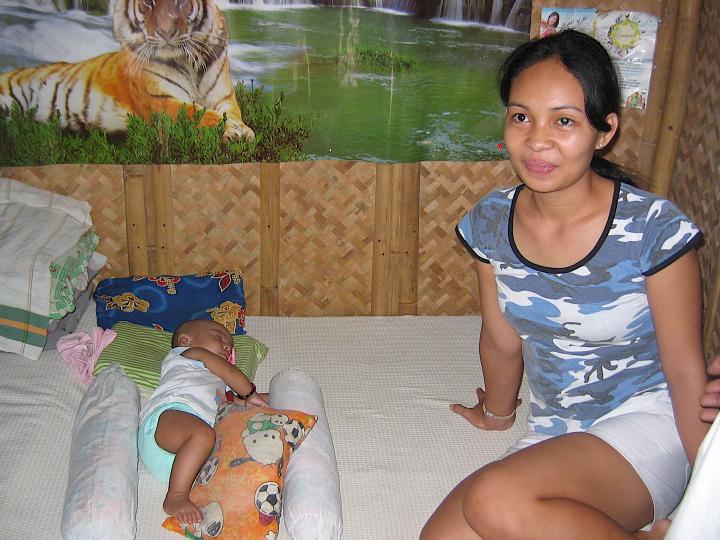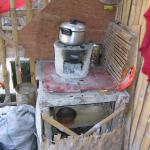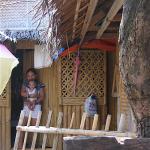Family Life on Boracay Island
Joe and Imi live in a house less than two meters long and two meters wide. Half their home is taken up by their bed. Walls are woven bamboo mats and there is a thatched palm leaf roof. Cooking is done outside over a fire and there are no real bathroom facilities. They do have electricity which powers their rusty ceiling fan and lone light bulb.
Joe is 38 years old and lives in the Philippines. He spent a day showing us schools, hospitals and houses on the island of Boracay. Joe is enterprising. He offers his services to tourists for snorkelling, fishing trips and motorcycle side- car tours.
Joe pays twenty- five American dollars a month rent on his small property, a quarter of his monthly income. Housing prices on Boracay used to be more reasonable. Tourism has brought jobs to the island but has also driven up land prices making it virtually impossible for local people to purchase property of their own.
Imi, Joe’s twenty four year old wife is a lovely woman. Her big eyes are warm, and her smile gracious as she welcomes us to her home. The tiny place is immaculately clean, with belongings carefully arranged on the shelves lining the walls. Imi and her five- month- old daughter Joanna are neatly dressed. How does Imi manage their beautifully clean clothes and shining hair when washing facilities consist of a tin basin outside filled with water toted from a central village pump. The battered basin is used for laundry, washing dishes and bathing little Joanna.
Joanna seems happy and content. Imi invites us to hold her. Joe tells us rather proudly that Joanna was born in the small local hospital. We visited the hospital earlier and the nurse there said virtually all babies on Boracay are born at home, some with the help of a midwife. The hospital is trying to work together with the midwives to insure newborns are brought to the hospital so the staff can do some basic blood tests, examine them and begin a medical record for them. This makes it easier to provide immunizations, spot potential health problems and provide better emergency care for the babies in the future. The nurse said that registration of newborns is an up hill battle. Many births are never recorded.
Joe also tells us Joanna was baptized in the large cathedral in the city of Balabag. The Philippines is 90% Catholic. My conversations with people in the Philippines made it clear their faith provides hope in the midst of poverty, but it is also the source of population problems. The powerful Catholic clergy forbids the use of modern contraception. No government funded clinics or hospitals are allowed to dispense condoms or birth control pills. This means only the rich can afford family planning. An article in the June 6, 2008 issue of Time magazine says population growth in the Philippines is outpacing agricultural and economic growth and creating real problems. The average Filipino family has six children. It was impossible for me to imagine Joe and Imi living in their tiny house with six children.
Joe and Imi had one lone chicken tied up to a stake outside their home. We thought it was for eating but Joe informed us it was a bird he kept to enter in cockfights that are a popular source of entertainment on Boracay. Joe said his chicken is a good fighter because it has an excellent bloodline.
Visiting Joe and Imi’s home gave us just a glimpse of what life is like for a family in the Philippines.
* * * * *
 ThingsAsian
ThingsAsian




















